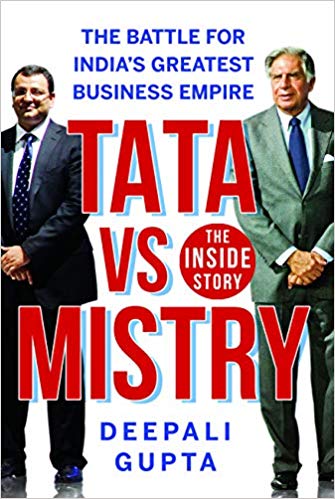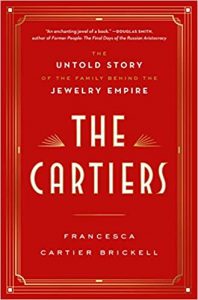Financial Journalist Deepali Gupta has covered the economy and stories of big corporate houses over the past 15 years. In Tata vs Mistry- The Inside Story, published by Juggernaut she dons the mantle of an impartial investigator looking out for what really happened. In a conversation with Bookedforlife, she talks about her first book…
While you have extensive experience of fifteen years as a financial journalist, this is your first book. What prompted you to take up this very high-profile story as the subject?
The firing of Cyrus Mistry and the events that ensued shook South Mumbai, which arguably runs corporate India and the private Indian economy. It resonated with almost the entire business community as well as those outside of it. Yet, was spoken of only in hush tones, because invariably the question that loomed was – ‘which side are you on’. Most people I knew in the South Mumbai community did not want to articulate a clear answer.
It raised questions that were crucial to the evolution of Indian business houses on succession, governance, and shareholder rights. It engulfed the entire legal community because of the high profile of the participants – Tata and Mistry. It had several important case studies for public relations, crisis management and in turn business schools. Nevertheless, at the end of the day, this was a story of dilemma, human decisions, and emotional reactions which are telling of the nature of business itself anywhere in the world.
While the news coverage of the events was very high decibel, there are parts in the book which did not and would not find their way into newspapers and magazines. Corporate India, now the world’s fifth largest economy needs to prepare chronicles of its constituents. We owe that to our future generation. I knew if I could pull it off, readers were waiting.
The offices of Ratan Tata and Cyrus Mistry have not directly commented for the book. However, you mention sourcing a lot of information from various sources. Did you expect this in a sense? Or did it dampen your efforts even for a brief moment?
Reaching out to them was one of the first things I did, and some part of me hoped that a response would come. Still, the intensity of the issue and given the prolonged court battle, I was prepared that comments may not be forthcoming. Both sides have maintained respect and propriety towards each other and refrained from speaking in the same vein.
The emotions were running so high and folks on both sides had been friends for so long that people were willing to speak.
I am grateful that they trusted my neutrality adequately to allow me to pursue research and arrive at my findings as I did.
You have quite interestingly presented the facts in a narrative story-like format, which makes it interesting to read. How challenging was it for you?
I have largely written for print media over the span of my career, and therefore have learnt to cater to a wide range of readers, from beginners in business to CEOs who need to maximize returns on time spent.
That said, writing a book I found is extremely difficult. When writing non-fiction there are three key elements. The first is research. The second is to filter the material and drop aspects that stray from the story. In a vast Group like the Tata’s, there are so many off-shoots to stories, and each seems critical. That is when the third element kicks in. It is having the ability to tear down your own work, and redo it in the interest of making the reading easier and concise. I had to rewrite most of it at least a couple of times.

The book reveals certain facts that may surprise readers who may not be well-acquainted with all the facts of the case, such as the fact that Mistry was a part of the very selection committee that was to select the chairman, or he was on a five-year contract, and some another such minuscule but interesting details. What was the most surprising and unexpected discovery for you through the entire process?
There were many big and small ones. Several people close to events confirmed that there had been hurt for a long time, and the event of Mistry’s firing had been coming. Still, the biggest surprise for me was that trouble had begun as early as it did. When I chanced upon some of the correspondence referred to in the book, it was surprising how well articulated the discrepancies had been and yet how few people suspected anything right to the end.
You have chronicled the process of accusations to and fro in both the Tata and Mistry camps. Who in your opinion has won the battle of public perception…irrespective of the initial court rulings?
This is the story of dilemma of two people making the best decisions in their situations from their perspectives. The purpose of the book is not to answer Win or Lose, it is to present fact effectively. Paramount here was that both individuals were committed to preserving the institutional integrity of the Tata Group, and if financial results are any measure, that was achieved. Beyond that, whatever the Court decides will be the answer for posterity.
True indeed! However, given the detailed and extensive research that has gone into the book, it is surely a comprehensive study on the facts of the matter. “The initial response to the book has been good. It should spread awareness and further ignite debate on succession, governance, and leadership both in India and overseas. Here you have a two corporate power houses – Tata and Shapoorji Pallonji – that have made a mark globally, and I believe a global conversation with this detailed case study should result in some interesting outcomes,” concludes Gupta.




